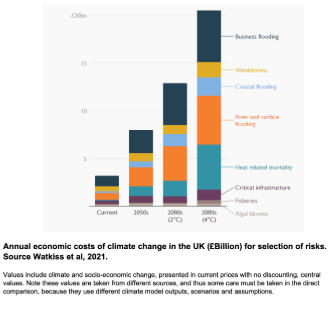Is Disney Collapsing?
- Arya Ravishankar
- Feb 16, 2024
- 5 min read
By Arya Ravishankar

As 2023 draws to a close, the Walt Disney Company finds itself at a crossroads. Known for its iconic brands, beloved characters, and immersive experiences, Disney has long been a leader in entertainment, enriching the lives of millions of people around the world. However, the company has faced a series of significant challenges in recent months that have had a profound impact on its bottom line. These challenges include a string of box office flops, increased competition from rival entertainment giants, and mounting financial pressures resulting from the investment in its Disney+ streaming service. As a result, Disney's share price has reached its lowest point since the height of the global pandemic. Disney is clearly in trouble.
Direct-to-consumer Model
In recent years, Disney made a significant shift in their business strategy by moving towards a direct-to-consumer model, highly influenced by lockdown and Covid-19, meaning that Disney is increasingly delivering content to viewers through streaming platforms and digital channels rather than the traditional methods using TV and movie theatres. Disney has seen success with their Disney+ streaming service, attracting over 100 million subscribers worldwide. However, keeping all of their content library up-to-date and creating new shows and movies is expensive. This has caused some concern that the company might not be able to keep up their high level of investment.
Another challenge facing Disney is the problem of reaching a global audience. With the direct-to-consumer model, it can be harder to distribute content to people all over the world because of regional regulations and licensing agreements. However, Disney has found other ways to make money from their content, such as through advertising and product tie-ins. For example, Disney+ now offers an ad-supported tier that lets people watch their favourite shows with shorter ad breaks. Although Disney is not alone in its journey towards the direct-to-consumer model and other entertainment giants have also embraced this strategy, as the competition in the streaming landscape continues to grow, it's clear that Disney's willingness to adapt will determine its ability to maintain a position as a global entertainment leader.
Over-saturation of the Market
Despite the initial success of their Disney+ streaming service, which has attracted over 100 million subscribers worldwide, the company has faced new challenges in delivering its content to a global audience. One of these challenges, known as oversaturation, occurs when the market becomes flooded with an excessive amount of Disney-branded content. This can lead to consumer fatigue, where audiences become overwhelmed by the sheer volume of content and start to lose interest in the company's offerings. The issue of oversaturation is particularly relevant given the vast array of intellectual property that Disney has accumulated over the years, ranging from iconic franchises like Star Wars, Marvel, and Pixar to classic animated films. While the company's content offerings have traditionally been well-received, an overabundance of similar-themed or branded content can contribute to a pervasive presence of Disney across various mediums.
To make matters worse, the constant exposure to Disney's products can make individual offerings less special or desirable. As the market becomes saturated with Disney products, there is a risk that demand for certain offerings might halt or decline due to a sense of repetitiveness or the feeling that there are just too many choices, making it harder for individual products or releases to stand out or capture sustained attention. The impact of oversaturation is already evident in the slow-down of demand for Disney's theme parks and resort business, which was hit especially hard by the COVID-19 pandemic. While the company is already taking steps to diversify its content beyond traditional entertainment channels, such as by providing educational programs for younger audiences through Disney Junior and Disney Channel and expanding its retail and merchandise offerings, it still faces an uphill battle against the challenge of oversaturation.
To address this challenge, Disney must balance its content curation to maintain the strong appeal of its brand without overwhelming consumers with an overwhelming volume of similar-themed or branded content. It can also make strategic decisions on release schedules and diversification of offerings to sustain consumer interest and prevent a decline in the perceived value or novelty of its products. Overall, oversaturation is a major challenge for Disney and one that it needs to address in order to retain its position as a front runner of the entertainment market.
The Shift Away from Original Content
Disney's shift away from original content towards a focus on live-action adaptations and sequels has been a controversial move that has divided fans. For example, the live-action adaptation of "The Lion King" was criticised as being too similar to the original animated version, which made it seem unnecessary. Additionally, the live-action adaptation of "Aladdin" was also criticised for its lack of originality and for feeling like a hollow remake. However, there have been examples of successful sequels and adaptations, such as "Frozen II" and "Mulan," which received positive reviews and did well at the box office.
The main reason for this shift can be attributed to the perceived financial security of established franchises that have a built-in audience. Creating original content comes with an inherent risk, and studios often prefer to invest in safe bets. Additionally, the success of Marvel and Star Wars has shown that existing franchises can be a profitable investment over original content. Studio execs also believe that audiences prefer familiarity over novelty, making it easier to market and advertise existing franchises rather than creating new ones.
The Evolution of Streaming Services
Streaming services, such as Disney + and Netflix, have evolved significantly over the past decade. Initially, these services were seen as a supplement to traditional TV and movie theatres, offering consumers an additional option for content consumption. As more and more people have shifted towards digital media, streaming services have grown to become one of the primary means of consuming content. The COVID-19 pandemic has accelerated this shift, as people have opted for the safety and convenience of watching movies and TV shows from the comfort of their homes. This has resulted in the decline of movie theatres and an increase in the importance of streaming services.
Cost of Large-scale Productions
The high cost of large-scale productions has had a significant impact on the film industry. Movies with a high budget can be a significant financial risk for studios, as they face the possibility of failing to make back the investment if the film doesn't perform well at the box office. This has led to studios focusing on making fewer high-budget films and opting for lower-budget projects instead. The impact of COVID-19 has also played a role in this shift, as studios are hesitant to spend large sums of money on movies that may not perform well in the current climate.
In conclusion, Disney is facing several challenges that have contributed to a decline in its popularity and dominance in the entertainment industry. The recent shift away from original content towards live-action adaptations and sequels has divided fans and has been criticised for its lack of originality. The evolution of streaming services, the high cost of large-scale productions, and the recent lack of box office success have all played a role in Disney's struggle to maintain its position as a leading force in the industry. Additionally, Disney's reliance on Chinese markets for its success has been threatened by COVID-related restrictions and uncertainties. The company must evolve to match the changing landscape and reconsider its approach to content curation and audience engagement if it is to remain a dominant player in the entertainment industry.







Comments